

Sāmoan matai protestors outside New Zealand Parliament on 28 March 2004 protesting against the Citizenship (Wester Samoa) Act 1982.
Photo: Supplied/Mark Mitchell/NZ Herald
The aftermath of the Citizenship Act [Western Sāmoa] 1982: Sāmoa’s third Mau
The story of Anae Arthur Anae and the new Mau's 30-year fight advocating justice for Sāmoa.


Pacific communities urged to check measles immunisation as Auckland cases rise

'Mind-blowing': North Shore elects first Kiribati councillor

‘Big Eddie’: The Sāmoan strongman lifting his faith and community

Tongans left soul searching after heavy defeat to Kiwis in Pacific Championships

Pacific communities urged to check measles immunisation as Auckland cases rise

'Mind-blowing': North Shore elects first Kiribati councillor

‘Big Eddie’: The Sāmoan strongman lifting his faith and community
This article is both important and timely for the following four reasons: Often in the euphoria of great achievements - when a wrong has been righted - the cacophony of loud praise for the successful outcomes and those associated with it drown out the story of the beginnings and the journey it took for those who were there at the beginning of the battle.
This is one of those stories.
Secondly, it is not only the story of one man’s sense of justice for his people, spanning almost 30 years to overturn the Citizenship Act [Western Sāmoa] 1982, but a story of the continuing systemic and institutionalised racism inflicted on Sāmoa and her people over the past century, as well as the intergenerational harm and trauma caused by successive New Zealand governments.
Thirdly, one of the main threads in this story is the tautua (service) and faaaloalo (respect) of Sāmoans I fafo – transnational or diasporic Sāmoans - who continue to serve their families, villages, and Sāmoa through ‘development from afar’ strategies, while trying to survive oppressive policies and legislation in New Zealand.
Finally, this story reaches its climax in advocating the Mau a Sāmoa I le Sitiseni as Sāmoa’s third Mau.
It was 2003. On a warm March summer day in Aotearoa New Zealand (NZ) at dawn, a gathering of 5000 Sāmoans came - by foot, cars and in buses for the Mau a Sāmoa I le Sitiseni 2003 savali/hikoi to Wellington.
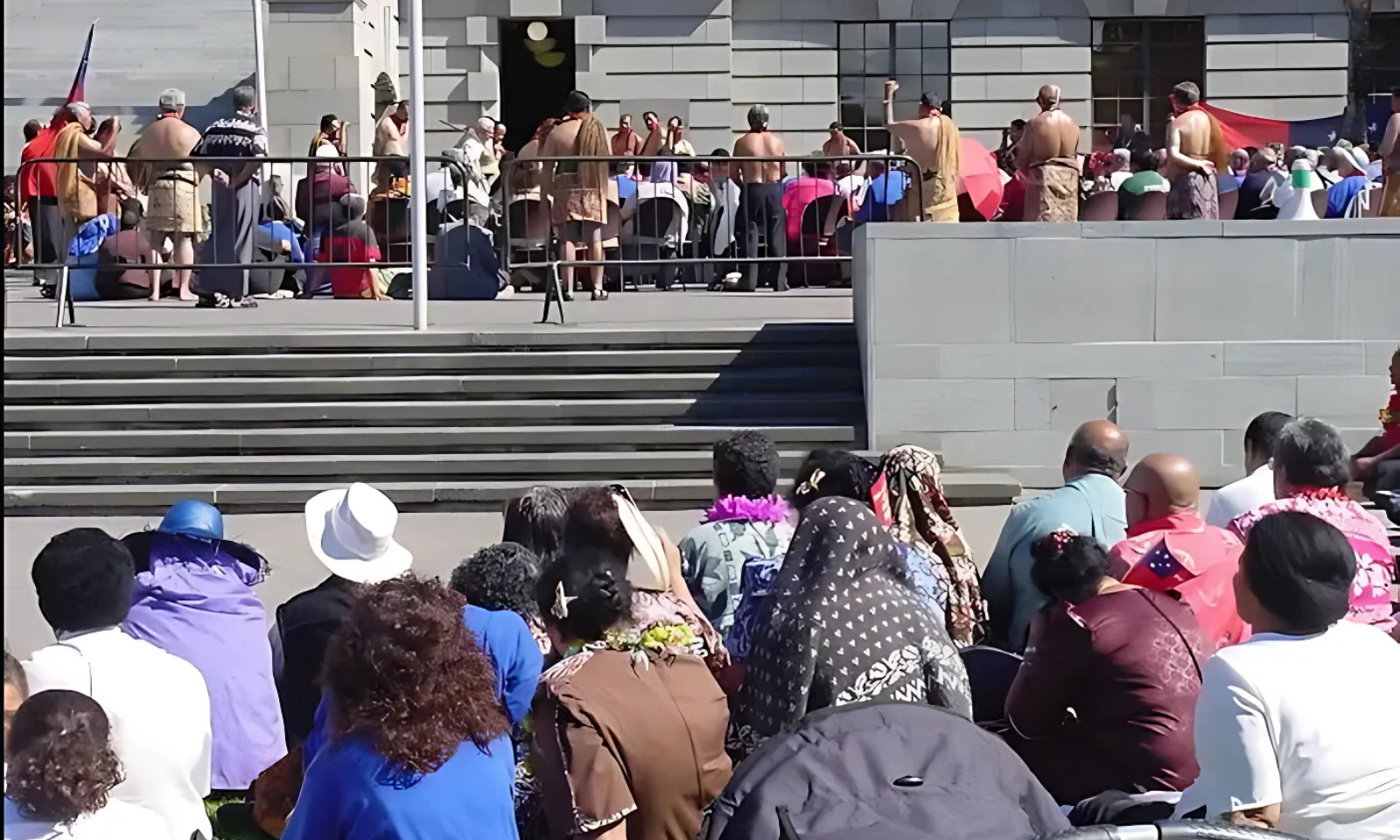
It was March 2003, Sāmoans protest for the repeal of the Citizenship (Western Samoa) Act of 1982, at Parliament Grounds, Wellington. Photo: Owen, Dylan, 1958- Photographs. Ref PADL-000081. Alexander Turnbull Library, Wellington, New Zealand. records23240440.
I was there on that fateful day. The air was electric. From the ancient tones of a welcoming conch shell calling our people to gather as it has across centuries.
The palpable excited energy of the marchers - they came - their voices filled with song, dance, and laughter, mingled with the 100,000 voices etched in the Mau a Sāmoa I le Sitiseni 2003 petition.
There were voices calling for justice and the repeal of the racist Citizenship [Western Sāmoa] Act 1982. Simultaneously, over 6000 people marched in Apia to the New Zealand High Commissioner’s office, where Maiava Visikota Peteru and Leota Leuluaialii Ale presented a copy of the Mau a Samoa I le Sitiseni 2003 petition. The date was 10 March 2003.
Like the Sāmoan people of the Mau a Pule and Mau a Sāmoa before them, this new Mau - Mau a Sāmoa I le Sitiseni - merging voices in Sāmoa with the voices of transnational Sāmoans - carried the burden of yet another gross injustice by New Zealand, buoyed by the ‘flotsam and jetsam’ of colonialist ideology, policies, and legislation.
Leading this new Mau, which united Sāmoans in NZ with Sāmoans at home was a leader walking in the light of the Mau leaders before him - Anae Lupematasila Lima Arthur Anae.
This is the story of Anae, who has given almost 30 years of his life leading the fight for the repeal of the racist New Zealand Citizenship [Western Sāmoa] Act 1982.
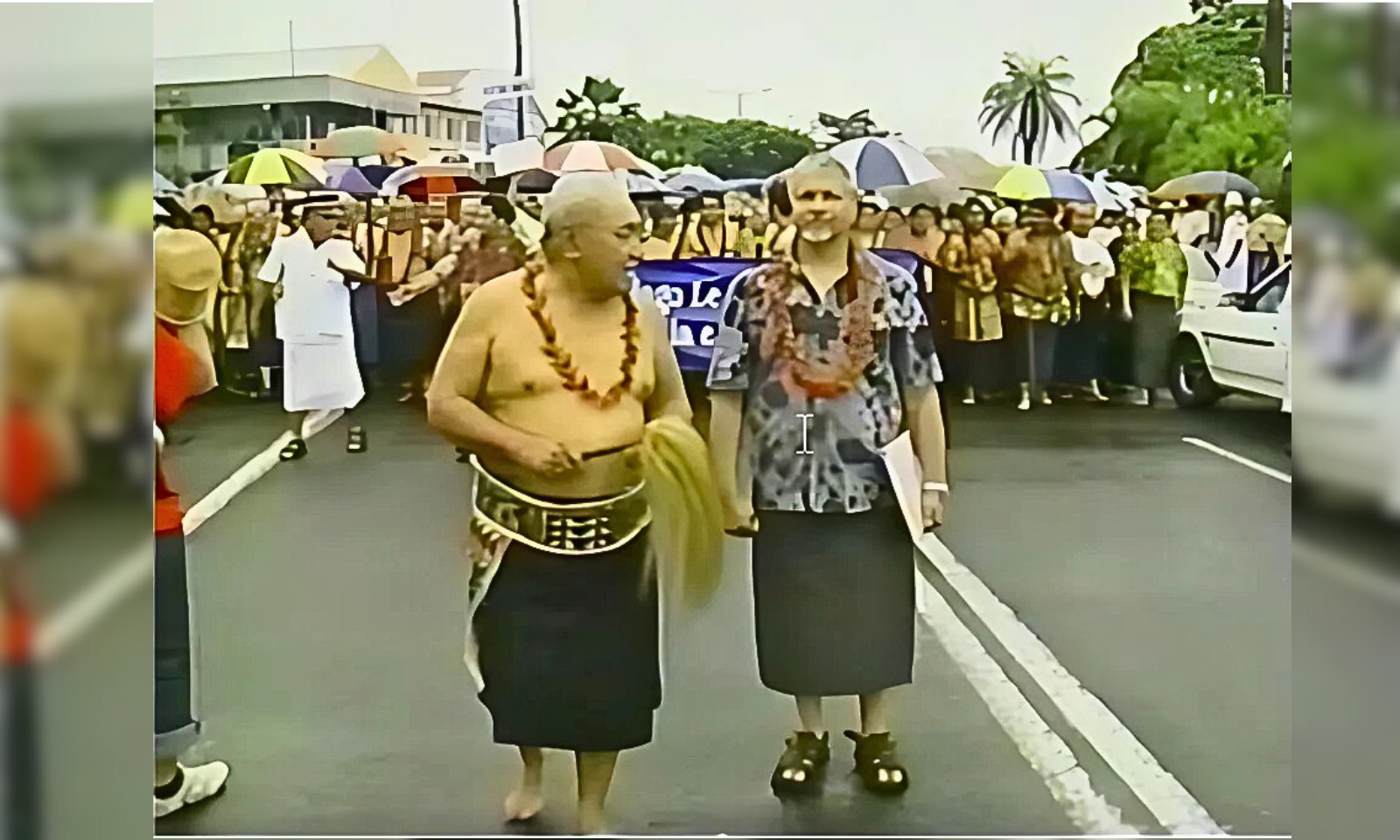
Leading this new Mau, right, Anae Lupematasila Lima Arthur Anae. Photo: Supplied.
A fight that was won on 20 November 2024, when the ‘Restoring of Citizenship Removed by the Citizenship [Western Sāmoa] Act 1982 Bill’ (RCRCA Bill 1982) was passed into law.
Anae Lupematasila Lima Arthur Anae – who is he? What has driven him to form and lead the Mau a Sāmoa I le Sitiseni movement since 1997?
When Anae’s mother, Lusi, immigrated to New Zealand in 1951, she brought with her, Anae, her eldest son, then five years old and three of his younger siblings.
Anae’s father, Afaue Liliva, had migrated earlier and was living and working in Grey Lynn. Helping his mother and her four children during the flight was Leuatea Sio, who later became his mentor - the Reverend Leuatea Sio ONZM QSO,- a pivotal Minister of the Pacific Islanders Congregational Church (PICC), the first Pacific ethnic Church to be established in NZ in 1947.
Anae remembers the excitement he felt when they landed at Whenuapai airport. He remembered shouting out “Va’ai le povi….Va’ai le povi” when he saw his first New Zealand cow as they drove through west Auckland.
Anae’s parents were part of the first wave of the great migration of Sāmoan settlers who came to New Zealand in the 1940s and 1950s to fill the labour shortage.
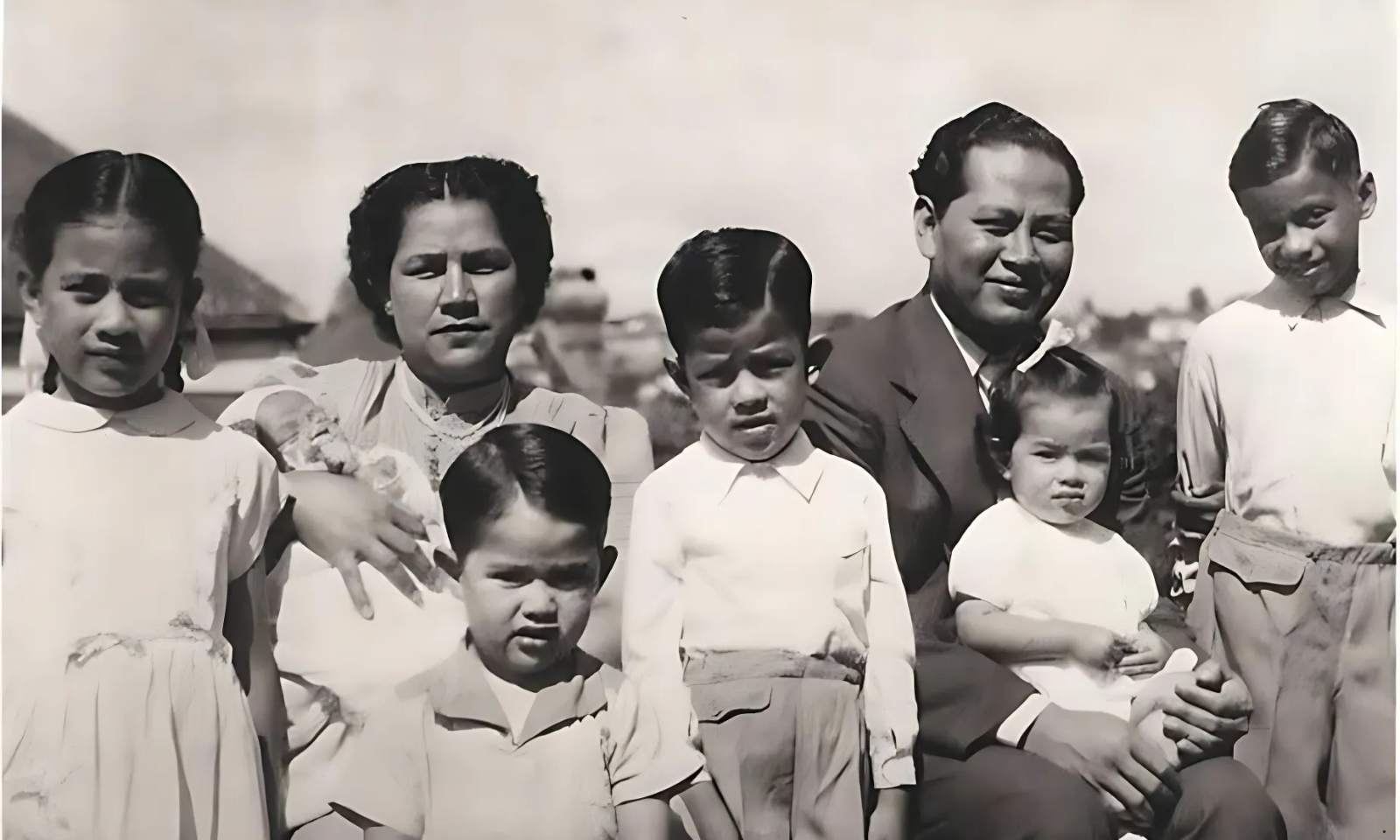
Anae's parents were part of the first wave of the great migration of Sāmoan settlers to New Zealand. Photo: Supplied.
They both worked in factories – industries which contributed to the building of the infrastructure of New Zealand while raising a family of eight.
Attending the PICC from Sunday School through adulthood, and being part of a large Sāmoan aiga with gafa (geneologies) extending from Apia village, Falelatai, Siumu, Leaga and Safotulafai, instilled in Anae a love for family, church, and faasamoa.
This fuelled in him the call to help his Sāmoan people. What he wanted the most was the opportunity for Sāmoans and other new migrants to thrive and prosper in this new land.
It was when Anae’s Dad received the Lupematasila title from Falelatai and became a matai in the 1960s that inspired him to live a life dedicated to service - both to his aiga in Sāmoa and to Pacific communities in New Zealand.
This tautua (service) ‘to help his people’ has taken many forms. He has served as a family matai representing Samai, Samatau, Falelatai, and Apia villages in Sāmoa and in Samoa I fafo.
He is a prominent pioneering and astute Pacific businessman, an Elder of the PICCChurch and a former Chair of its Development Committee.
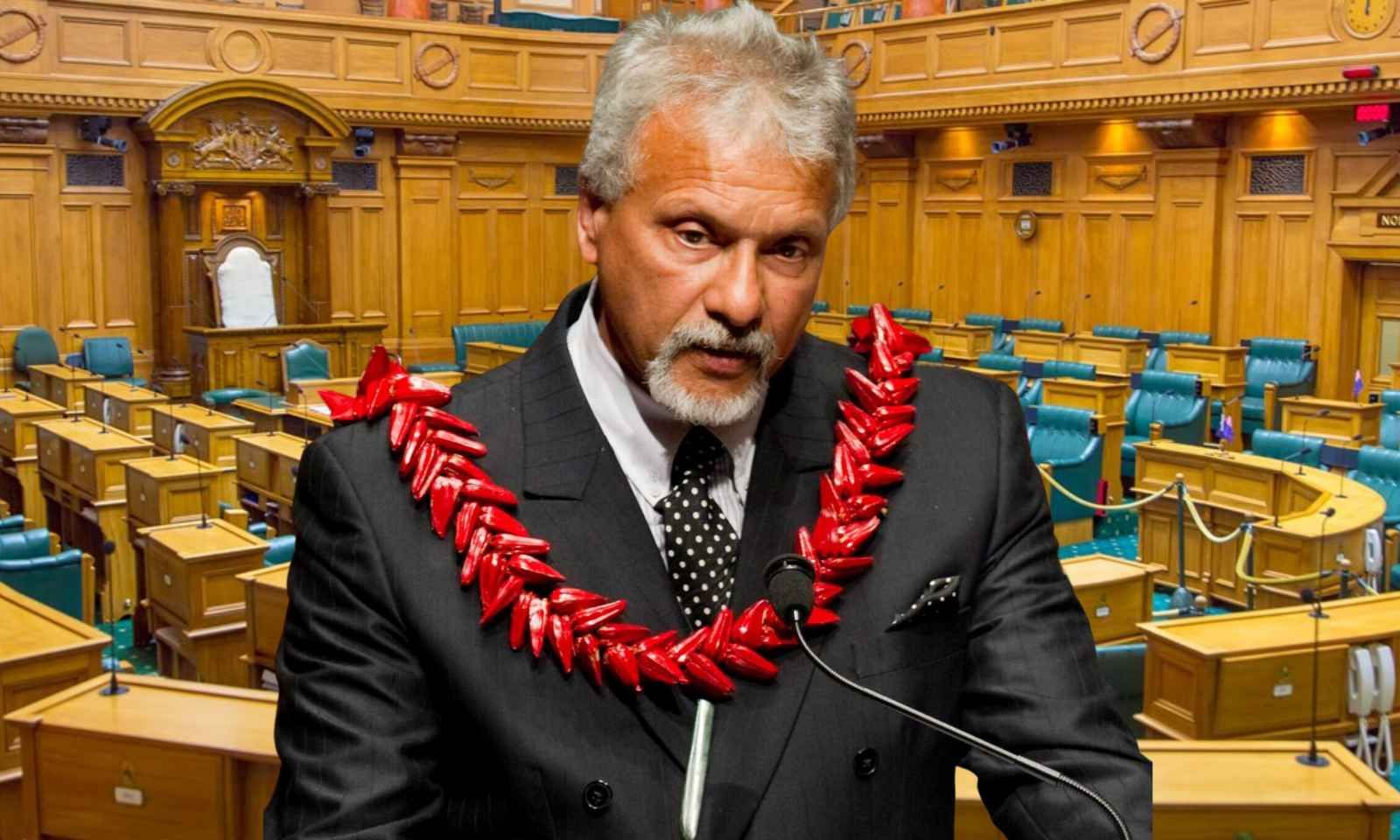
Anae Arthur Anae first entered Parliament at National list MP in 1996. Photo: Supplied.
Anae served as a politician from 1996-2002. He first stood for Parliament in the 1993 election, contesting the Auckland Central electorate, where he came third.
He then entered Parliament in the 1996 election as a list MP. In the next election, he missed returning to Parliament by a single place. However, when Don McKinnon resigned, Anae entered Parliament as his replacement.
In 1999, he lobbied for and set up the Portability of NZ Superannuation to the Realm of NZ for Pacific people on their retirement and reaching the age of 65. From 2000-2002, he served as a National MP. He also set up the Pacific Room in Parliament in 2002, which he achieved while he was in the opposition.
His service in local politics 2004-2016 - Anae first stood for Auckland City Council in the 1987 local elections. In October 2004, he was elected to the Manukau City Council - Otara ward. He ran for the mayoralty of Manukau City in the 2007 local body elections, polling third. He served as Chair of the Economic Forum for both Auckland and Manukau City Councils in 2010. He was re-elected in 2013 but did not stand in the 2016 elections.
While in Parliament in the early years, Anae was drawn to the Falema’i Lesā Case, the Privy Council decision, and the ensuing Citizenship Act [Western Sāmoa]1982.
In 1997, he started in earnest to investigate and research the decision, which led him to meet and work with prominent New Zealand lawyer Dr George Barton Q.C. and Wellington lawyer George Rosenberg. In 1998, Anae had Dr George Barton address the National Party caucus to honour the Privy Council Decision of 1982.

Falema’i, right, at the office of her lawyer George Rosenberg in Wellington 28 July, 1982. Pictured with Margaret Beare, George’s secretary. Photo: Peter Avery/Ref EP19822359-F/Alexander Turnbull Library.
They worked together tirelessly and closely on this case. Knowing fully well that this was a racist and unjust treatment for a specific cohort of Samoan people. Anae committed himself to do all he could to repeal this blatantly oppressive Act.
In 2003, he formed and led the Mau a Samoa I le Sitiseni savali/hikoi. Today, he fondly remembers those elderly Sāmoans who prayed for the day when the New Zealand government would deliver their rights.
He remembers Logo Selau, who like Anae’s father, said, “If you start this, you must finish it”. He also recalls the over 95 per cent of those elderly supporters who stood and sat in the rain during Mau rallies in Sāmoa in 2003, and the Sāmoan community leaders who sat in buses travelling overnight to Wellington to support the submitting of the Mau a Samoa I le Sitiseni petition of 100,000 signatures, and who then climbed back onto the buses for the 20-hour drive back to Auckland on the 10 March 2003.
So what happened as a result of the Mau a Sāmoa I le Sitiseni savali/hikoi and petition? Alas! - No action on honouring the Privy Council decision. This was despite rigorous debating in the House by leading protagonists in the following months.
Former Prime Minister Helen Clark on 1 September 1982 stated: “I challenge the Attorney-General’s assertion that we could not live with a situation in which thousands of people could come to live here at any time…at any time, 14 million Australians could enter NZ without visas and reside here permanently. Why is the Government so worried about the remote possibility of 100,000 Sāmoans exercising their right to live here?”
These sentiments were backed by P.J Downey, the Chief Human Rights Commissioner, when he said: “The Repeal citizenship [Western Sāmoa Act] 1982 ‘was a deprivation based on racial grounds” on 1 September 1982.
And again, Helen Clark on 8 September 1982: “The Bill is discriminatory. It is discriminatory in stripping NZ citizenship from only one specific group of people: dual-citizenship holders in Western Sāmoa who are non-resident in NZ”.
Former Sāmoa Prime Minister Tuilaepa Sa'ilele Malielegaoi talked to Pacific Mornings about the Treaty of Friendship protocol.
Instead, the New Zealand and Sāmoa governments rushed around negotiating and offering other options - a protocol called ‘The Treaty of Friendship’ between the Government of New Zealand and the Government of Western Sāmoa – but nothing close to what the Mau a Sāmoa I le Sitiseni was asking for, which only exacerbated the distrust and unease of the Sāmoan people with successive NZ governments, with tentacles reaching back to 1918, the flu epidemic, the assassination of Tupua Tamasese Lealofi Aana III in 1929, and the Dawn Raids of the 1970s in NZ despite apologies for all these atrocities by two New Zealand Prime Ministers.
The untimely passing of Barton in 2011 prevented Anae from achieving his greatest goal. There were no dedicated lawyers coming forward to carry on where Barton left off.
But then the unexpected and unimaginable happened. Thirteen years later, Teanau Tuiono pulled out the racist Citizen (Western Sāmoa) Act 1982 from Parliament’s biscuit tin and immediately set his Member’s Bill, the Citizenship Western Sāmoa) (Restoration) Amendment Bill in train.
Anae immediately set to work - the Mau a Sāmoa I le Sitiseni 2003 needed to reassemble. Fortuitously, a prominent Sāmoan Barrister based in London, Luamanuvao Katalaina Sapolu, contacted Anae and offered her services to make the Amendment Bill a reality.
Anae then swung into action - he amassed his Mau a Sāmoa I le Sitiseni 2024 team anew – some faithful members from the 2003 team and some new members, including two Deputy Chairs, Tofilau Nina Kirifi-Alai and Aupito William Sua, and Maiava Visikota Peteru - making up a strong committee who embarked on numerous events to mobilise the Sāmoan community in New Zealand and abroad to complete and lodge submissions.
Anae acutely recalls how appreciative he was when Winston Peter (NZ First), and David Seymour (Act Party), against the National Party veto, approved Tuiono’s Bill at the first reading. Without this initial Coalition Government faux pas, Sāmoans would not be celebrating the Citizenship win today.
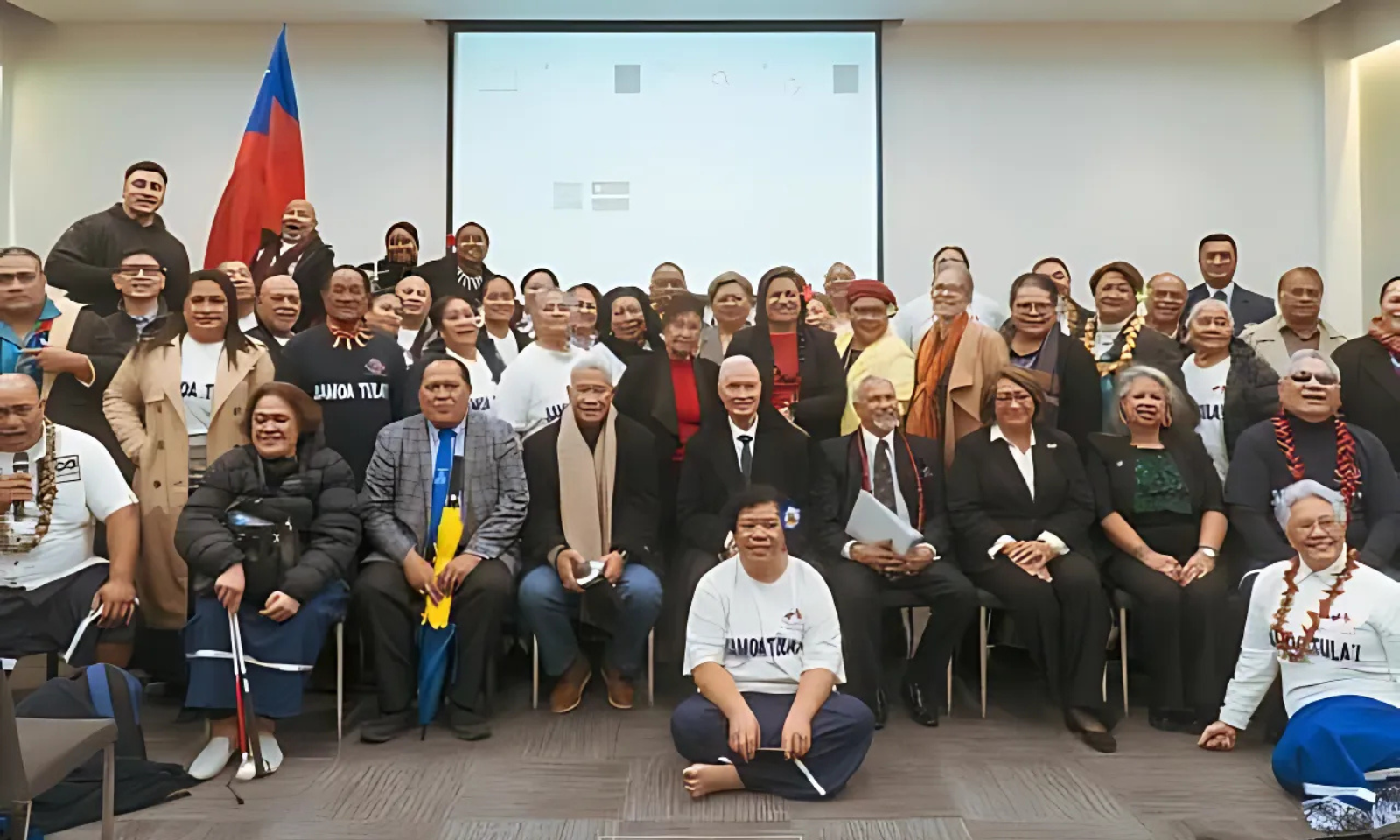
Anae swung into action, amassed his Mau a Sāmoa I le Sitiseni 2024 team anew. Photo: Supplied.
Yes, we know now that because of the advocacy of the Mau a Sāmoa I le sitiseni, media attention, a host of Sāmoan community meetings held in New Zealand and in Sāmoa, that a whopping 24,500 submissions were received.
There was even a petition collecting 7,000 signatures, as well as the numerous individual submissions of its followers in New Zealand and in Sāmoa.
But perhaps the most influential and well-researched powerhouse submission came from the Mau a Sāmoa I le Sitiseni 2024 when kanohi-ki-kanohi was able to speak directly to the power – face-to-face.
Its submission consisted of a bundle of four submissions read and presented as a whole: one written by Anae as Mau a Sāmoa I le Sitiseni leader; the second was a presentation from Iulai Blakelock – Toma; the third was written by two prominent Sāmoan barrister/lawyers – Luamanuvao Katalaina Sapolu and Tamasailau Suaalii-Sauni who presented a 46- page expertly-crafted legal argument with relevant historical and current, local and global legislative data, references and examples; and the fourth, a historical narrative titled ‘Sāmoa and her unfinished business with New Zealand’ penned by the Polynesian Panther Party Legacy Trust, which honed in on the Dawn Raids of the 1970s as yet another example of the oppression and institutional racism inflicted on Sāmoa and her people over the last 130 years.
Together, the weight of 24,500 submissions and the Mau’s four-submission bundle visibly shook the Select Committee Government MPs at its second reading meeting when the submissions were orally presented.
The National MP on the panel was very interested in Luamanuvao’s exposition and wanted more details of her legal analysis. Who would not be when she eloquently ended her presentation, eye-balling the select committee with the famous provocative questions “If not you…who? If not now…when?”. The second reading was unanimously passed, this time with National Party support on 24 October 2024.
Following this, on 20 November 2024 another Mau a Sāmoa I le Sitiseni savali/hikoi to Wellington to attend the third reading of Tuiono’s Bill. This time, 21 years after leading the first 2003 savali/hikoi, there was no fanfare or thousands of people in attendance on that historic day.
Just Anae, carrying the 24,500 voices of the submissions, and his faithful, now older Sāmoan community supporters who arrived in buses from Auckland.
They sat in silence in the balcony of the Beehive chamber with hopeful expectations, with prayer and a song in their hearts, carrying their aiga past and present with them, waiting for the final outcome, as thousands, perhaps millions watched the live stream historic moment when the Bill passed into law.
Finally, what the Mau a Samoa I le Sitiseni 2024 submissions presented was remarkable opportunity for the New Zealand Government to right the terrible wrong of 1982 and an opportunity to make Anae’s 30-year Mau a Sāmoa I le Sitiseni vision a reality.
The submission authors are confident that their submissions contained the way forward in New Zealand/Sāmoa relations. They were also confident that the passing of the Bill would bring justice to those 16,500 Sāmoans and their descendants who were wrongly deprived of their New Zealand citizenship.
By doing so, the Government would be honouring the intergenerational voices of those who were traumatised by the injustice of the government’s actions in repealing the Privy Council decision, the Dawn Raids, the assassination of Tupua Tamasese Lealofi Aana III, and the flu epidemic. And in doing so, it would build trust in New Zealand political regimes in the future.
But more importantly, it would ensure that yet another incidence of state-sanctioned racism against Samoa and her people will never happen again. Anae remembers the wisdom of our former PM Helen Clark when she said: “Slow down…Listen. Think the thing through before New Zealand adds another sorry chapter to its sordid history of dealings with Western Sāmoa and her people.”
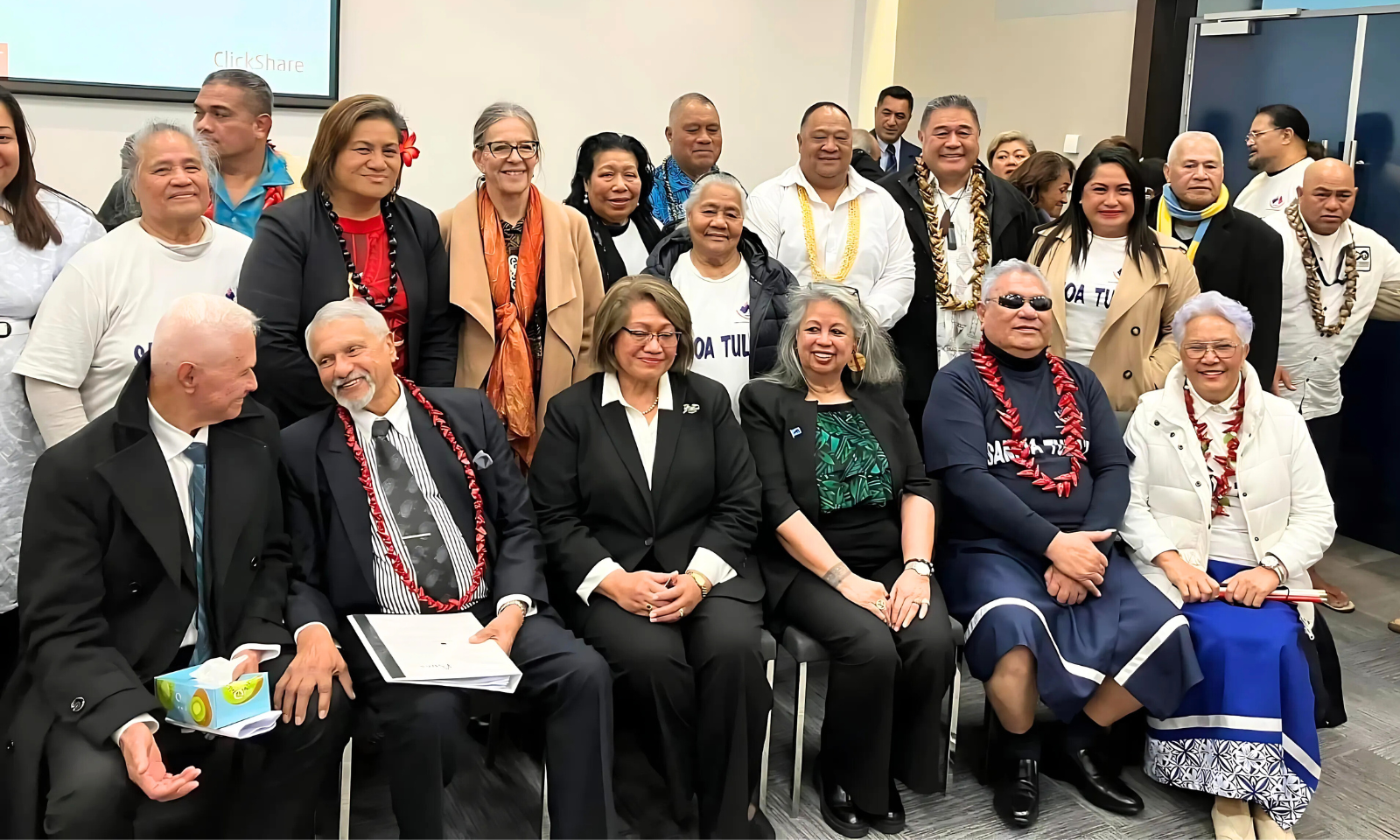
Mau a Sāmoa I le Sitiseni after parliamentary select committee hearing. Photo: Supplied.
There are so many convergences and synergies in Anae’s story of the Mau a Sāmoa I le Sitiseni with the two previous historical Mau in Sāmoa.
In this complex, multi-sided history of Sāmoa’s unfinished business with New Zealand, like his Mau predecessors, Lauaki Namulau’ulu leader of the Mau a Pule (1908), and Taisi O.F. Nelson and Tupua Tamasese Aana III, leaders of the Mau a Sāmoa (1920), who fought and died for Sāmoa’s independence from New Zealand colonialist racist regime, Anae Lupematasila Lima Arthur Anae emerges as a humble but relentlessly profoundly astute, courageous and indefatigable leader of Sāmoa’s drive for non-violent resistance and social justice as leader of the Mau a Sāmoa I le Sitiseni 2003 & 2024.
What the Mau a Sāmoa I le Sitiseni heralded was the love, care and tautua for all Samoans living in New Zealand and Sāmoa by fighting against hurtful legislation. But even more than this it marks a shift of the changing tide of time and place. A time when today there are more Samoans living in New Zealand (234,200) than in Sāmoa (218,019).
This ‘new’ Mau heralds a ‘new transnational’ Sāmoa- a new space where most Sāmoans live, enabling them to tautua (serve) and to economically develop their villages and Sāmoa through their cash flows of remittances, saofai (bestowal of chiefly titles ceremonies), tourist dollars, funerals and more recently family reunions. But more importantly, it heralds a transnational space where Sāmoans are more informed and equipped to deal with institutional racism from New Zealand governments of today and the future.
"Unsung hero" Anae talks with Pacific Mornings after bill passes third reading, December 2024.
It is no wonder that Anae has been recognised as Sāmoa’s “unsung hero” by former Deputy Prime Minister of Sāmoa Misa Telefoni Retzlaff in his 2021 book Tautua: Memoirs of a public servant.
Already a hugely successful businessman, Anae has used his national and international political and business acumen to address policies, practices and legislation hurting Pacific peoples in New Zealand.
For the last 30 years, he has been on global journeys in search of justice, taking him to Government meetings in Sāmoa and New Zealand. As well as financing some of this work himself, he runs a global campaign of letter and submission-writing, newspaper articles and numerous television interviews and social media pages to ensure Sāmoan and Pacific people’s perspectives on unfairness and justice are heard.
For me, Anae’s leadership of Sāmoa’s third Mau - the Mau a Sāmoa I le Sitiseni over the last 30 years is indicative of today’s agency and political activism of many transnational Sāmoans - Sāmoans i fafo - who are continuing the tautua of their fathers, grand-parents and ancestors where they live, and to their aiga in villages back home, and ultimately their tautua to protect and develop Sāmoa from afar. As Anae often states as his rallying call: Puipui Sāmoa mo taeao. Protect Sāmoa for the future.
Sāmoa Tulai!!
Lupematasila Misatauveve Dr Melani Anae QSO is an Honorary Associate Professor in Pacific Studies at the University of Auckland. She is also Chair of the Polynesian Panther Party Legacy Trust.